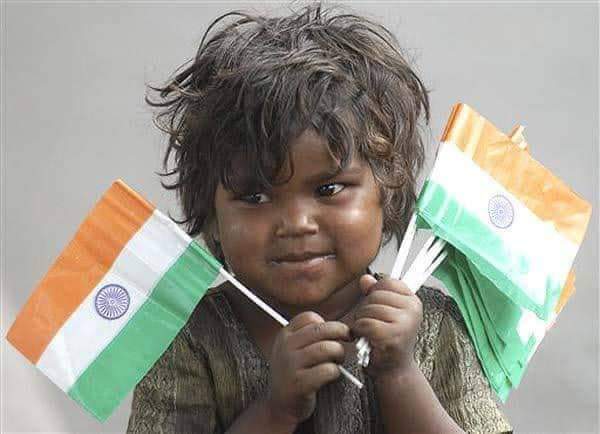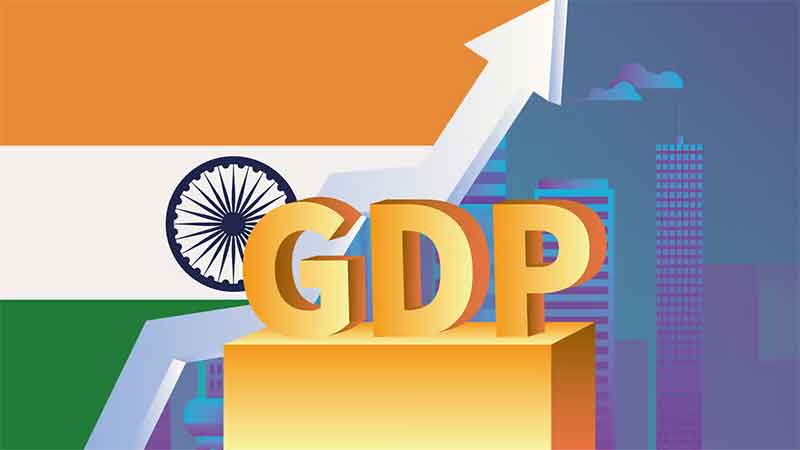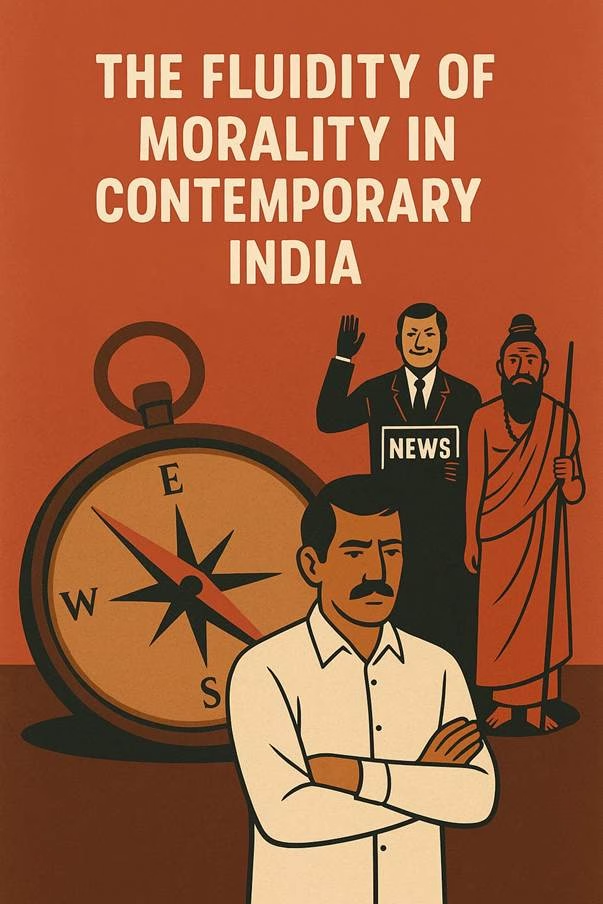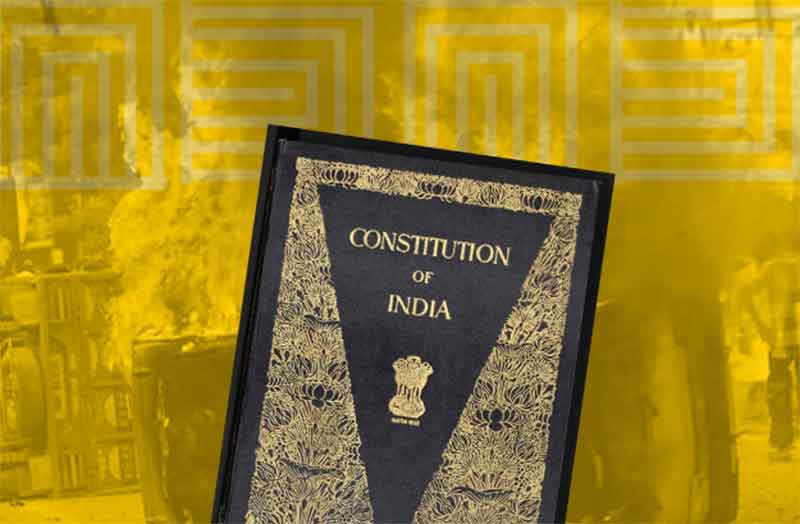
I’ve been studying in Dublin since September. Every afternoon I get a call from my mother. This is her check-in call to see if everything is alright. Among the things we discuss — if I’m eating well, the weather in Ireland, how her day went, we always land up on the topic of Indian politics. I allow her to fill me in. As she speaks I detect the anger and frustration in her accounts. The calls end on a note of sullenness, the old expression repeatedly making its mark — ‘Where is this country going?’
Not too long ago, around the time of the 2024 Lok Sabha elections, and not too long before that, the inauguration of the Ram Temple, which took place amidst anti-Muslim violence [1]and glaring displays of nationalist pomp, a peculiar phrase gained prominence amongst Indians everywhere. Unlike platitudes criticising the familiar corruption, poverty, and superstition, this expression addressed the unfamiliar, the wholly unreal circumstances that lay before us. The phrase was —‘Where is my India?’ There was an unmistakable feeling of possessiveness in that statement — ‘My India’, followed by a shock of unrecognizability — ‘Where is it?’. In that possessiveness was a feeling of love, and in that shock a questioning, not of where we were going as a nation, but of how exactly we got to this point. For all its failings, this place was considered a home by many, and now resembles an asylum where the inmates are at the mercy of a politically savage and disproportionately wealthy class.
I don’t take autos to work anymore, mom says on a phone call. Every second driver is out to fleece her, always demanding fare over the agreed amount. ‘How will we get by with this?’ they ask her, after she pays what the ride-hailing app’s algorithm determines. ‘You think this is enough? After the company takes their commission we have nothing.’ She pays them a little extra. Afterall, operating in a vehicular inferno like Bangalore all day and hardly making a living wage at the end of it doesn’t seem fair. She’s started with the bus again. Mom is sixty one, and I don’t like the idea of her taking the bus to work at her age, or even working at that age, which many elderly must now do in order to survive. It’s not just auto-drivers, interactions are tense with everyone — the vegetable sellers, the cab drivers, the shop owners, the plumbers, the electricians, the insurance agents, the real estate brokers, the salespeople at the mall. No one feels they’re getting their effort’s worth, and customers feel they aren’t getting their money’s worth. Everyone’s desperate these days, she says.
Dad is losing his mind getting the workers to renovate the bathrooms. They are all very young, in their early twenties, and have travelled from the north. Shaky thin, their hair a shade of malnourished brown; they scoff at him every time he points out a mess up, whether it’s matching the tiles incorrectly or using the wrong colour of paint. They work under a contractor, and aren’t formally trained in the profession. Once in while dad and the young men will chat. They’re always eager to tell him where they’re from, how there was nothing back home for them, and why they came to Bangalore. They don’t actually want these jobs either. They just need jobs. And with what the contractors pay them, it’s hardly enough to care. Their tale ends with a bereft look, one that betrays a sense of estrangement. Of being in a strange city, of what they thought this place would give them and what they’d found, so far from home.
One of the key objectives in the Doubling Farmer’s Income Policy is transitioning labour from farm sector jobs to non-farm sector jobs[2]. That is to say that the leading national policy on agriculture believes that farmers have a better chance of doubling their income if they are out of agriculture than if they are in it. Maybe that’s what those young men had in mind when they migrated — escaping resource-starved agrarian India, where farmer’s harvest losses, where debt from production costs alone is a hole you may never climb out of, and death by suicide stalks its inhabitants. What they didn’t have in mind, I am sure, was becoming casual labour in sporadic construction work, brick kilns, mines, garment sweatshops, and cement factories. Or perhaps they knew all along, making the choice even more grim, even more desperate.
To the presumptuous and well settled, a good education is what’s lacking, even though unemployment rates remain the highest amongst graduates in the workforce; most of them deemed unemployable or not ‘job-ready’ by vast sections of industry. Industrialists, always on the bleeding edge of social progress, have figured it’s not education that’s lacking but relevant skills. Industry relevant skills, to be specific, usually followed by advice on scrapping non-STEM subjects like the arts and humanities, which apparently aren’t relevant to industry at all. These recommendations come in an age of artificial intelligence, where blindingly rapid advancements in tech and precarious job markets make predicting exactly what ‘industry relevant skills’ are and how long they stay relevant, anyone’s guess. Where even the safe and sensible scholar of engineering, finds only 10 percent of themselves suitably employed after graduating[3]. Yet, the grotesque idea that even children of rural India, approximately half of whom suffer from chronic malnutrition[4], will stay ahead of the curve and fairly compete for those few coveted corporate jobs has never discouraged the bourgeois imagination of a ‘developed’ nation.
Not to worry. ‘India’s youth, will not have even imagined the number of opportunities that will come their way’, the Prime Minister assured us last year in his usual unselfconscious bravado. I wonder if he’d been referring to the NITI Aayog’s projection of the gig economy tripling its workforce by 2030; a cool and trendy industry that pays its workers less than 500 rupees a day on average[5] for the same hours as full-time work, and never fails to conjure notions of rock bands, independence, and choice. Or maybe he is still of the opinion that Pakora making constitutes reliable employment. Self-employment is on the rise after all[6], a category that refers to domestic workers and roadside vendors who take up low-paying informal work, with no means of securing stable jobs with social security.
Chief Economic Advisor V Anantha Nageswaran asks why people are blaming the government for joblessness in the first place. ‘It is incorrect to assume that the government can solve all social and economic problems such as unemployment,’ the economist said at the launch of an ILO report in 2024. ‘In the normal world, it is the commercial sector who needs to do the hiring.’[7] Yes, in a normal world youngsters wouldn’t be getting mixed messages either. If the government can’t solve unemployment, and Industry leaders say graduates are unemployable, who’s going to pick up the slack? A growing sentiment perpetuated in entrepreneurship obsessed startup cultures and echoed in institutional non-profits puts the onus of job creation on the graduates themselves. That graduates must create their own opportunities through entrepreneurship, and the fault of joblessness is entirely their own is the new self-help policy. Think of the disbelief of graduates, who from the womb were told that an education was a way out of poverty, became educated, and are now called educated fools because they have prepared for an economy of work that does not exist for them.
A term popular in our beleaguered generation describing such a dilemma is gaslighting. Where the Orwellian doublethink is to hold two contradictory ideas at the same time, gaslighting is a form of manipulation where one is made to doubt their powers of reason by presenting them with a version of reality that trivializes or outrightly denies their personal experience. The reality faced by young people today is that there are simply no institutions, public or private, looking out for them. Yet they are bombarded with pernicious messages of abundance and opportunity, and finally blamed when they fail to manifest this illusory prosperity.
Be it job creation, education, or healthcare, it has become common for elected representatives to make fantastical statements and never hearing what has come of them. A desperate public faced with the choice of lesser evils takes such promises with a grain of salt. Voters wisely accept ‘gifts’ from contesting parties during elections, agreeing to vote for them both. They do so with the expectation that atleast something will be done to improve their lot, if not anything. However, it is no longer the case of authorities making promises and failing to keep them. Nowadays, governments pretend they never made them in the first place.
Mom tells me that the farmers are back at the capital’s Shambhu border again, being doused with tear gas and hosed with high pressure water cannons. They’re demanding what they’ve always demanded since the announcement of the Three Farms Laws half a decade ago — a law guaranteeing a reasonable remuneration on their crops; a law that has still not been passed despite the government’s promise to do so since the last round of negotiations. This time the protesting farmers are calling themselves ‘marjeevras’ or ‘people willing to die for a cause’[8], going on a fast-unto-death hunger strike till their demands are met. If anyone’s reading this right, it takes a death cult of farmers holed up near the capital border for years, protesting in war like conditions and losing hundreds of comrades to cold, disease, and violent clashes in order to remind the government that promises mean something.
Unsurprisingly, vegetables and meat are now becoming luxury items. Across the board, people eat less[9] with less spending power on food, let alone going out on shopping sprees to prop up the GDP. When India grew at 8% in FY 2023-24, bureaucrats and news outlets insatiably praised the government in bringing the economy back from its COVID slump to growth levels close to its liberalization hay days. Despite our knowledge of ground realities, comprehensive studies[10], our memory and instincts telling us otherwise, they pulled it off, they saved the economy. Who could forget the gross mishandling of the pandemic? Harrowing memories of breathless patients and burning pyres, of mass exoduses of immigrant labourers to their homelands, innumerable small businesses going under, while 200 million Indians were pushed into poverty[11]. All of it vindicated, forgiven, and justified by changing a single number. So when anyone complained that wages had been stagnant for years[12] or that inflation had practically made Indians poorer in the last decade, we were asked to look up at that magical 8 on the scoreboard and condemned to a perplexing silence. Some were even willing to overlook the rise in religious mob lynchings and riots that took place in the same period. Maybe religious violence had something to do with the economy performing so well. Whatever the government was doing, it was working.
Today we are told that the Fiscal Deficit is lower than it’s ever been. Even if a lower fiscal deficit translates into increased taxes and reduced public spending in health, education, and targeted social welfare programs[13]. Just months before the Lok Sabha elections, The NITI Aayog conveniently released a study that estimated that only 11.28 % of Indians were in ‘Multi-dimensional Poverty’, bolstering the image of the BJP. Using a homegrown index, the study used cherrypicked development parameters[14] to match flagship schemes of the central government, leaving out income and consumption levels, possibly the most relevant dimensions of standard of living. Imagine telling 30 crore people earning less than the national minimum floor wages[15], which in itself is an abysmal Rs. 375 a day, that they aren’t ‘Multi-dimensionally’ poor. Or the 80.10 crore low income and destitute households who subsist on highly subsidized food grains that it’s all in their heads.[16] A few weeks later the NITI Aayog Chief claimed the poverty ratio had miraculously fallen to below 5% declaring that poverty in the country had almost disappeared![17] The move was criticised as a shameful lowering of the poverty threshold[18], where millions of Indians are asked to limbo underneath grinding levels of poverty to even have the dignity of being called poor.
‘People are living better and earning better, with even greater aspirations for the future. Average real income of the people has increased by 50 per cent,’ said the Finance Minister in her 2024 budget speech[19]. Look, I don’t think there’s a single Indian who isn’t ecstatic to hear news like that, but feels hesitant when they reach into their pockets and find themselves literally shortchanged by reality. Whenever someone questions the veracity of these figures in terms of tangible improvements to their lives, they are bonked on the head with hype campaigns like Amrit Kaal, Make in India, Atmanirbhar, Three Trillion Dollar Economy, Ache din, and Viksit Bharat accompanied by a chorus of corporate backed soothsayers who have vested interests in projecting an optimistic image of India Inc. Oh, and that’s Viksit Bharat by 2047, a long enough time for another pandemic or global recession or other ‘headwinds’ to pin the blame on. When all else fails, they show us the car sales. See, look how many cars we’ve sold? Who do you think is buying those cars? And what about those MUDRA loans, hmm? At each juncture there is a denial, a thwarting of lived realities. The collective suffering buried under statistical jargon and narrative masonry.
Meanwhile, we are witness to nauseating displays of wealth like the seven-month long wedding bonanza of Anant Ambani, son of multinational overlord Mukesh Ambani. We’ve seen business giants like Gautam Adani multiply their net worth by nearly 5000 percent during the BJP’s rule, despite accusations of insider trading, bribery, tax evasion, and underhanded dealings with the government.[20] Staggering figures on wealth inequality show the richest 1 percent cornering 40 percent of national wealth[21] and Indian executives earning in four hours what workers do in an entire year.[22] Indirect taxes bleed the poorest of Indians, while individuals pay more income tax than corporates whose rates are regularly slashed despite record profits[23]. We know that in last decade juggernauts of industry have had absolute immunity against the law. Flaunting regulations, international law, and committing outright fraud is not only permissible, if you’re in bed the right people you will be called nation builders and national champions[24]. We know that someone’s making money, and it’s not us.
Perhaps the most cruel aspect of gaslighting is that it alienates an individual from their sense of self. A gaslighter may lie, trivialize, deny responsibility, distort facts, and withhold resources in attempting to control their victim’s perception. The person affected is left disoriented and distrustful of their memory and powers of reason. Deferring one’s judgement to the gaslighter, the victim is unable to gauge the seriousness of the offence made and may even doubt there was an offence to begin with. One can withstand all kinds of abuse and affronts to their integrity in this condition. In India, catastrophes are ongoing and continuous, occurring in full view and awareness of the public, and are yet met with passive acceptance and denial.
Last year, I was returning home from Jayanagar. It was midnight when the autorickshaw dropped me at my apartment. The driver parked at an odd place; a little further down from the building, away from the streetlights, and in something close to darkness. I owed him Rs. 500, a fare he tripled for travelling at night. I retrieved a 500 note from my wallet, gave it to him, and turned to leave. Then the man called me back. ‘Boss,’ he said, holding up the note I’d given him. I examined the note in the darkness. I couldn’t believe my eyes; the man was holding a Rs.100 note instead of the one I gave him. I searched my wallet, shinning the torch of phone inside, and surely enough I could not remember the exact notes that were there before. ‘But I just gave you the money,’ I protested. The man flicked the note with his fingers and said cooly — ‘What money?’. Suddenly I began to question if I had given him the right note. I panicked and searched again. Eventually, the man accused me of trying to cheat him. He stepped out of the auto, shaking his fist, and threatening me with violence.
Twelve lakh crore of credit given to large corporates between 2014-24 were written off as unprofitable ventures and fraud.[25] Some defaulting companies were sold cheap to the Adani Group, forcing banks to accept liability claims substantially lower than what was owed. When news like this hits us, there is a hesitancy to believe it. No one wants to believe that 12 lakh crore of public money, our money, the annual budgets of several states put together, vanished into thin air. The reason is existential. How would we justify our lives? Our systems, or the institutions we uphold? This evasion of confronting crisis was seen in the electoral bonds scam as well, where companies under investigation by central enforcement agencies donated ₹2,471 crore to the ruling party for a clean slate[26] with no accountability to this day. It happens in the knowledge that the government doles out of crores worth of mining, oil, and gas contracts to their largest donors and sells data, roads, ports, airports, and all means of public assets to their closest cronies. No longer do we ask questions about where our toil, our taxes, and votes, are going. We do not ask where our money has gone, because we know what those in power will say — ‘What money?’
It’s not just the corruption, election racketeering, and corporate ransacking of national wealth we are afraid to confront; we have lost more than just money. When Muslims and Dalits can be lynched in cold blood every other week and after 75 years of independence Adivasi settlements are rampaged by mining corporations with no recourse to law, they say — ‘What rights?’. When journalists and academics are murdered by goons and targeted for reporting facts, while corporate media force feeds us mind numbing state propaganda, they say — ‘What truth?’. When activists and student leaders languish in prison for years without trial, while pillaging rapists receive pardons and are garlanded for their actions, they say — ‘What justice?’. When lakhs of minorities go missing from the voters list and no one bats an eyelid; when the Election Commission and the Supreme Court have been transplanted with pawns of the ruling party, and the government’s official role has been reduced to making inflammatory speeches and digging up mosques, they declare — ‘What government? And what Constitution are you talking about?’
A year ago we watched the Ram Temple inaugurated with such grandeur worthy of what many professed as ‘India’s second independence’. The excitement matched only by the fear of 200 million Muslims pondering their fate in this strange new nation they found themselves in. The Prime Minister, the leader of a secular constitutional democracy, acted as priest, performing the consecration rituals of the temple amidst tiki torches and sacred flames. Seldom could one look at that grand temple and miss the bereaved spectre in the frame. Taunting us, reminding us of the ruined Babri Masjid that lay underneath it. When the people asked, ‘Where is my India?’, the cruel answer they got in return was – ‘What India?’
To each of these, the government is equipped to defend their actions with legions of experts, news anchors, historians, judges, lawyers, and filmmakers. We are made to feel ill-equipped to assess new legislations that are passed in parliamentary blitzkriegs, and provided with infantilizing explanations, euphemistic titles, and convoluted logic to assuage our concerns — the abrogation of Article 370 has brought peace and development to Jammu & Kashmir; demonetization was an attempt to retrieve black money and formalize the economy; the Citizenship Amendment Act sought to rehabilitate refugees of religious persecution, except Muslims, of course. We are lost in the arguments, in the clever framing of a plot against our own interests. It doesn’t help that we’re in the dark with a media that merely sanctifies the actions of the government and treats its gravest atrocities as venial sins.
June 1st, 2024, the day the exit polls were announced, newsrooms in conspiratorial unison projected a landslide victory for the BJP, winning by nothing less than 300 seats. The news shook opposition parties, and non-partisan civil society organizations who played a decisive role in discouraging the hate politics of the BJP. The Bharat Jodo Yatra, the protesting farmer unions, the consolidated minority vote, the fragile but painstakingly forged INDIA Alliance seemed to had no effect on the election’s outcome. News anchors were breaking out the champagne and taking congratulatory interviews with Prime Minister even before the results were announced. The message they were driving was clear – your efforts mean nothing, give up. That is until they were unanimously proven wrong three days later when the BJP registered a pyrrhic victory with less than half the total seats, shattering their invincible image.
A questioning of the dominant narrative is always met with the prospect of violence. A young journalist from Chhattisgarh was recently found in a septic tank with a broken neck, broken ribs, 15 fractures to the head, and his heart ripped out after exposing corruption in highway construction contracts. State sponsored riots, extra-judicial killings, late night lynchings, vigilante justice, and trial by bulldozer, is the fate of those who challenge the system. For minorities, mere existence is an offence. They hang swords over our heads; our protests met with threats of ‘retaliation’ over hurting ‘sentiments’. We are held hostage to mass delusions, with no choice but to accept an insane narrative or be hounded and slain by psychopaths as they stroke our heads and tell us everything is okay.
Like polio in genocide-torn Palestine, archaic notions have found ways to resurrect themselves from the rubble of constitutional values. We have retrograded to a medieval society where myth and conjecture presides over the nationalistic mind. Ideas such as caste as a harmless social arrangement based on profession, Muslims as hyper fertile ‘infiltrators’, cow urine as elixir, Brahmin genes, a ‘non-biological’ PM, and Nathuram Godse, the murderer of Gandhi, as a national hero, have taken root.
Our silence has become vast and interminable. Our own voices usurped by the constant droning of hate, narcissistic grandiosity, and civic collapse. We have chosen apathy because it is better than losing one’s mind. It has allowed us to live alongside mass internment camps like Kashmir, and for months with that raging fire in the corner of the country — Manipur, the burning state of India. At the heart of our timidity lies the fear that things are too far gone, that we are indeed incapable of understanding the scale of forces at work. Noam Chomsky said: ‘Some of the most effective kinds of propaganda are the kinds that allow you to see what’s going on, but make you feel you cannot do anything about it.’ In order to escape this feeling of powerlessness, half the country has once again flung themselves into the arms of a leader who promises to lift them from the despair he himself has created, while providing the perfect scapegoat to vent their anger. How else have people bought into the delusion that Muslims are to blame for the country’s problems, and only through their annihilation development will reach them? While one side reacts with passivity, the other goes around terrorizing minorities, burning villages, grabbing any power they can. Both are powerless. Both are forms of denial that avoid self-responsibility and owning up to their oppressors.
Subscribe to Our Newsletter
Get the latest CounterCurrents updates delivered straight to your inbox.
We can no longer mistake — either the elected government actively works for its people, or is actively works against them. Nor can we afford to pardon the excuses of false nuance, utopian futures, and nationalist sentimentality every time the sledgehammer is brought down on our constitutional way of life. There’s a lot of talk about the loss of ‘the soul of India’, but I believe the vagueness of that notion is just another evasion of what is required of us. We spent the last year in self-pity and mourning, eulogizing the death of a country we once knew. We must accept that loss and now bravely partake in deciding what will come in its place.
Joshua Lobo is a researcher and writer from Bangalore, having worked in the non-profit sector and academia in public health, education, and sustainability. He did his master’s in Development at Azim Premji University and is currently doing a second master’s in Creative Writing at University College Dublin. His work has been published in The Book Review and Mongabay, and The India Forum.
Notes
[1] India: Violence marks Ram Temple inauguration. (2024, January 31). Human Rights Watch. https://www.hrw.org/news/2024/01/31/india-violence-marks-ram-temple-inauguration
[2] Doubling of farmers income. (2022, December 13). Ministry of Agriculture & Farmers Welfare https://pib.gov.in/PressReleasePage.aspx?PRID=1883177
[3] Chadha, S. (2024, September). Only 10% of India’s 1.5 MN engineering graduates to secure jobs this year. Business Standard. https://www.business-standard.com/finance/personal-finance/only-10-of-india-s-1-5-mn-engineering-graduates-set-to-secure-jobs-this-yr-124091600127_1.html
[4] Rajaram S, Zottarelli LK, Sunil TS. (2007, March 7) Individual, household, programme and community effects on childhood malnutrition in rural India. Maternal & Child Nutrition, 129-40.
https://pmc.ncbi.nlm.nih.gov/articles/PMC6860608
[5] Banerjee, N. (2024, November 6). India’s gig workers: Their deplorable plight and how it can be remedied. SME Futures. https://smefutures.com/indias-gig-workers-their-deplorable-plight-and-how-it-can-be-remedied/
[6] Employment, Wages, and Inequality (2024, March 11) Ten Years of NDA: A Guarantee Check, Bahutva Karnataka, Pg 4
[7] Staff. (2024, March 27). Wrong to assume government can solve unemployment, says chief economic advisor. Scroll.in. https://scroll.in/latest/1065864/wrong-to-assume-government-can-solve-unemployment-says-chief-economic-advisor
[8] Staff. (2025, January 17). Farmers to make 4th attempt to reach Delhi from Shambhu border on January 21. Hindustan Times. https://www.hindustantimes.com/cities/chandigarh-news/farmers-to-make-4th-attempt-to-reach-delhi-from-shambhu-on-january-21-101737052034781.html
[9] Reuters. (2024, November 13). India’s middle class tightens its belt, squeezed by food inflation. The Hindu. https://www.thehindu.com/business/Economy/indias-middle-class-tightens-its-belt-squeezed-by-food-inflation/article68865186.ece
[10]Jha, M. & Lahot, R. (2022, September) Who was Impacted and How? Covid-19 Pandemic and the Long Uneven Recovery in India. CSE Working Paper. Azim Premji University
https://publications.azimpremjiuniversity.edu.in/4297/1/CSE-working-paper_49.pdf
[11] Staff (2021, May 06). 230 million Indians pushed into poverty amid Covid-19 pandemic: Report. Business Standard
[12] Raghavan, T. S., & Raghavan, T. S. (2025, January 21). Fiscal deficit, inflation, rupee—why govt and RBI need to cut themselves some slack. ThePrint. https://theprint.in/opinion/fiscal-deficit-inflation-rupee-why-govt-and-rbi-need-to-cut-themselves-some-slack/2454227/
[13] A Record of BJP’s Empty Promises of Social Justice (2024, March 11) Ten Years of NDA: A Guarantee Check, Bahutva Karnataka, Pg 7
https://bahutvakarnataka.wordpress.com/guaranteechecks/#social-justice
[14] Jalihal, S. & Reporters Collective (2024, December 28) To show dramatic reduction in poverty, Modi govt rigged a homemade poverty index. The Wire. https://thewire.in/government/to-show-dramatic-reduction-in-poverty-modi-govt-rigged-a-homemade-poverty-index
[15] Ibid.
https://bahutvakarnataka.wordpress.com/guaranteechecks/#employment-wages-and-inequity
[16]80.10 Crore beneficiaries availing benefits of Public Distribution System through 5.45 lakh Fair Price Shops across the country (2023, July 21) Ministry of Consumer Affairs, Food & Public Distribution
https://pib.gov.in/PressReleasePage.aspx?PRID=1941387
[17] Dhoot, V. (2024, February 25). Poverty levels below 5%, claims NITI Aayog chief. The Hindu. https://www.thehindu.com/news/national/poverty-levels-now-below-5-destitution-almost-extinct-niti-aayog-ceo/article67885895.ece
[18] Staff. (2025, January 02) New study takes on NITI Aayog’s poverty ratio fall claim. The Wire. https://thewire.in/economy/new-study-takes-on-niti-aayogs-poverty-ratio-fall-claim
[19] Athialy, Joe. (2024, March 19). Union Budget 2024-25: High on claims, less on substance. Down to Earth. https://www.downtoearth.org.in/economy/union-budget-2024-25-high-on-claims-less-on-substance-94234
[20] Srivas, A., & Agarwal, K. (2023, March 3). What the Adani crisis means for India’s growth story. Foreign Policy. https://foreignpolicy.com/2023/03/06/adani-group-crisis-hindenburg-india-modi-economy-growth/
[21] Sebastian, B. M. (2023, January 16). Richest 1% own 40.5% of India’s wealth, says new Oxfam report. BBC https://www.bbc.com/news/world-asia-india-64286673
[22] Staff. (2023, May 01) Indian top executives earn in four hours what workers do in a year, shows study. Scroll.in. https://scroll.in/latest/1048287/top-executives-from-india-three-countries-saw-9-pay-hike-in-2022-but-workers-took-3-cut-report
[23] Das, Y.S. (2024, July 23). How middle class pays more taxes than corporates, and gets ignored too. India Today. https://www.indiatoday.in/business/budget-2024/story/union-budget-2024-nirmala-sitharaman-middle-class-income-tax-burden-data-corporate-tax-numbers-2570554-2024-07-23
[24] Raghotham, S. (2023, March 20). When economic strategy is centred around ‘national champions.’ Deccan Herald. https://www.deccanherald.com/features/when-economic-strategy-is-centred-around-national-champions-1199296.html
[25] Sircar, J. (2024, December 23) Narendra Modi’s mammoth bank heist over the last 10 years. The Wire. https://thewire.in/banking/modi-mammoth-bank-heist-last-ten-years
[26] PTI (2024, March 22). 41 companies facing probe by central agencies gave Rs 2,471 crore to BJP through electoral bonds: Petitioners. ThePrint. https://theprint.in/india/41-companies-facing-probe-by-central-agencies-gave-rs-2471-crore-to-bjp-through-electoral-bonds-petitioners/2012037/
















































